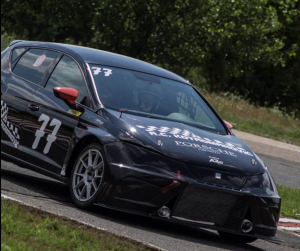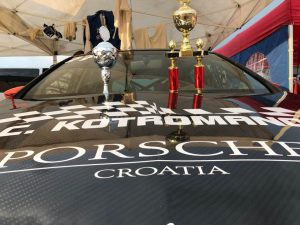Proteklog vikenda, 16. i 17. lipnja održane su 2 utrke Prvenstva Hrvatske kruga u Banja Luci. Desetak vozača odlučilo je odmjeriti snage na njima već izuzetno „domaćoj stazi“.
Natjecatelji su se bodovali u 4 klase (1 – do 1400 ccm, 5 – do 1600 ccm, 8 – do 2000 ccm, te 12 – preko 2000 ccm).
U klasi 1 prvu trku odnio je Hrvoje Čikor, prateći ga Frano Knego, te Stipe Bekavac kao treće plasirani. 2. trka ista lica na postolju, samo redoslijed nešto drukčiji – Knego izlazi kao pobjednik, Bekavac drugi, te Čikor treći.
U klasi 5 oba dana isti redoslijed gdje je Đivo Franić izašao kao pobjednik ispred Mare Franića, te Novice Stella-e (koji je bio prisiljen odustati na drugoj utrci zbog kvara). Franići su drugu utrku vodili zanimljivu borbu do kraja, gdje je Đivo nakon 16 krugova bio tek nešto više od sekunde brži.
Klasa 8 podosta usamljena sa samo jednim vozačem. Žarko Knego je sa svojim Civic Type-R pokazao da ima još što za ponuditi, te se vozio dosta brzo, čak uz natjecatelje iz više klase!


Kao suma vikenda, možemo reći da je svoju dominaciju najavio AK Dubrovnik Racing sa pobjedama u apsolutno svim klasama, te su trenutno voditelji po broju bodova. Prate ih AK Buzet, te AK Solin. Ono što možemo reći, uzbuđenja sigurno nije falilo te je ovo odlična najava za nastavak PH već ovaj vikend u Cerklju!
Natjecatelji su se bodovali u 4 klase (1 – do 1400 ccm, 5 – do 1600 ccm, 8 – do 2000 ccm, te 12 – preko 2000 ccm).
U klasi 1 prvu trku odnio je Hrvoje Čikor, prateći ga Frano Knego, te Stipe Bekavac kao treće plasirani. 2. trka ista lica na postolju, samo redoslijed nešto drukčiji – Knego izlazi kao pobjednik, Bekavac drugi, te Čikor treći.
U klasi 5 oba dana isti redoslijed gdje je Đivo Franić izašao kao pobjednik ispred Mare Franića, te Novice Stella-e (koji je bio prisiljen odustati na drugoj utrci zbog kvara). Franići su drugu utrku vodili zanimljivu borbu do kraja, gdje je Đivo nakon 16 krugova bio tek nešto više od sekunde brži.
Klasa 8 podosta usamljena sa samo jednim vozačem. Žarko Knego je sa svojim Civic Type-R pokazao da ima još što za ponuditi, te se vozio dosta brzo, čak uz natjecatelje iz više klase!

Najbrži klasu u PH obilježili su već poznati suparnici na stazama iz prošlogodišnjeg izdanja Business Vip Kupa – Kotromaović, Nežić, te Bubičić. Zoran Kotromanović je sa svojom Leon Cuprom pokazao dominaciju u ovoj klasi postavljajući najbrže vrijeme na stazi. Nežić kao drugi, te Bubičić kao treći su prošli cilj kako u prvoj, tako i u drugoj utrci.

Kao suma vikenda, možemo reći da je svoju dominaciju najavio AK Dubrovnik Racing sa pobjedama u apsolutno svim klasama, te su trenutno voditelji po broju bodova. Prate ih AK Buzet, te AK Solin. Ono što možemo reći, uzbuđenja sigurno nije falilo te je ovo odlična najava za nastavak PH već ovaj vikend u Cerklju!




